Higher classification Thymelicus | Family Hesperiidae Scientific name Thymelicus lineola Rank Species | |
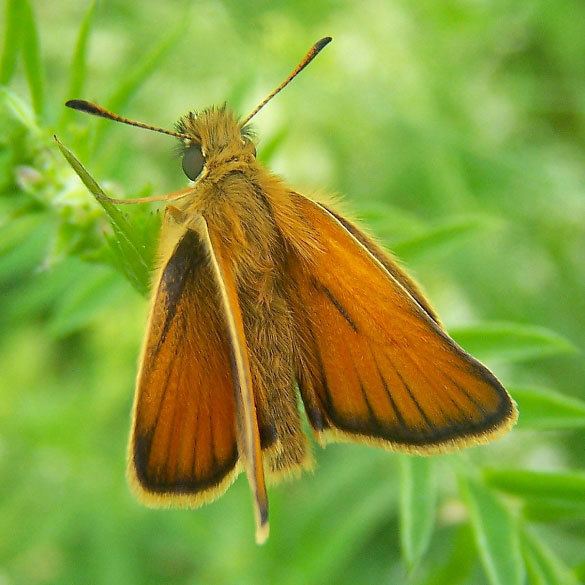 | ||
Similar Thymelicus, Small skipper, Large skipper, Butterflies and moths, Butterfly | ||
Essex skipper
The Essex skipper (Thymelicus lineola) is a butterfly in family Hesperiidae. In North America, it is known as the European skipper.
Contents
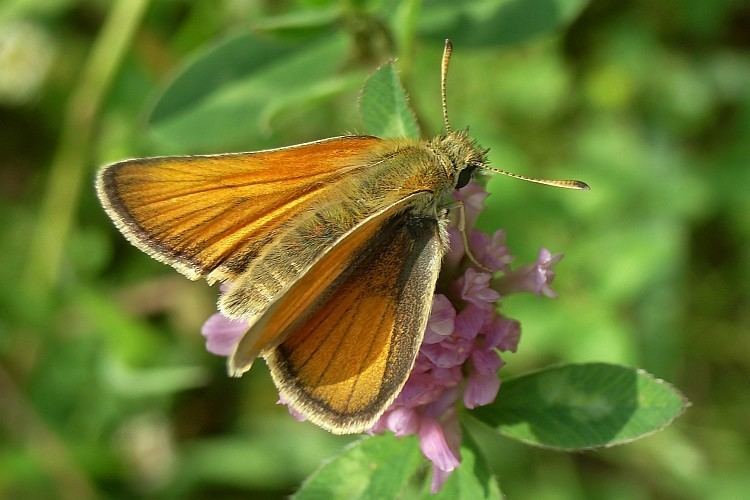
With a wingspan of 2.5 to 2.9 cm, it is very similar in appearance to the small skipper Thymelicus sylvestris. They can be told apart by the undersides of the tips of their antennae: the Essex skipper's antennae are black, whereas those of the small skipper are orange. This butterfly occurs throughout much of the Palaearctic region. Its range is from southern Scandinavia through Europe to North Africa and east to Central Asia It was only identified in the UK in 1889, and its range is expanding both in England and in northern Europe. In North America, this butterfly was accidentally introduced in 1910 via London, Ontario and has spread across southern Canada and into several northern US states.
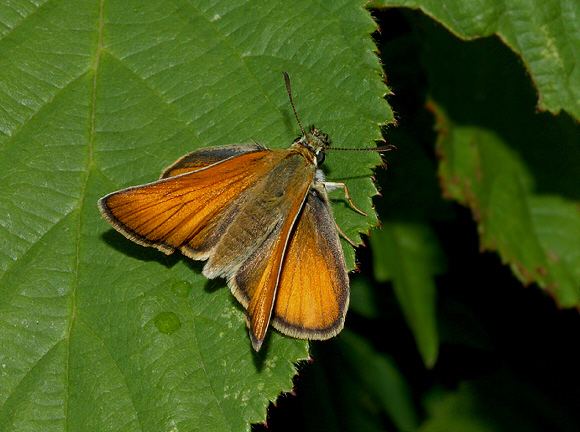
Life cycle
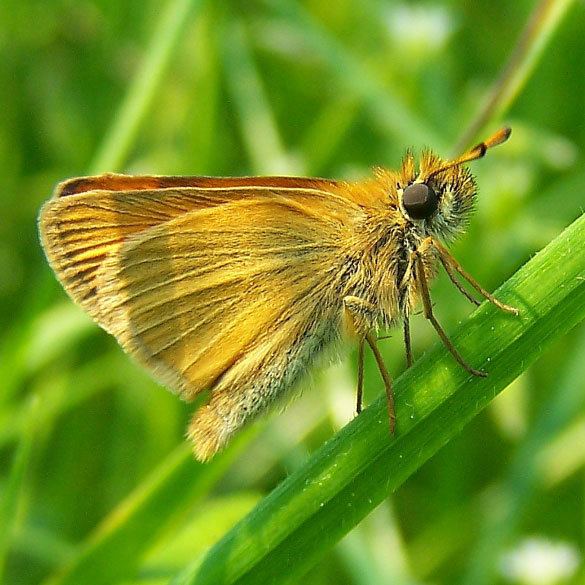
Eggs are laid in strings on the stems of grasses where they remain over the winter. The Essex skipper's favoured foodplant is cock's-foot (Dactylis glomerata), and it rarely uses the small skipper's favoured foodplant Yorkshire fog. Essex skippers' other foods include creeping soft grass (Holcus mollis), couch grass (Elymus repens), timothy-grass (Phleum pratense), meadow foxtail (Alopecurus pratensis), false brome (Brachypodium sylvaticum) and tor-grass (Brachypodium pinnatum). This skipper's caterpillars emerge in the spring and feed until June before forming shelters from leaves tied with silk at the base of the foodplant to pupate. Adults fly from July through August. Like most skippers, they are fairly strictly diurnal, though individuals are very rarely encountered during the night.
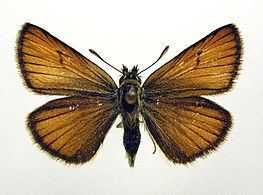
This skipper's oval eggs are pale greenish-yellow, flattened above and below with slightly depressed tops. Caterpillars are green, with yellowish incisions between their rings; each with a dorsal, darker green stripe and yellow lateral lines. A larva's head is pale brown striped with darker brown. Elongate chrysalids are yellowish-green, and each has a dark dorsal stripe seen in caterpillars.
